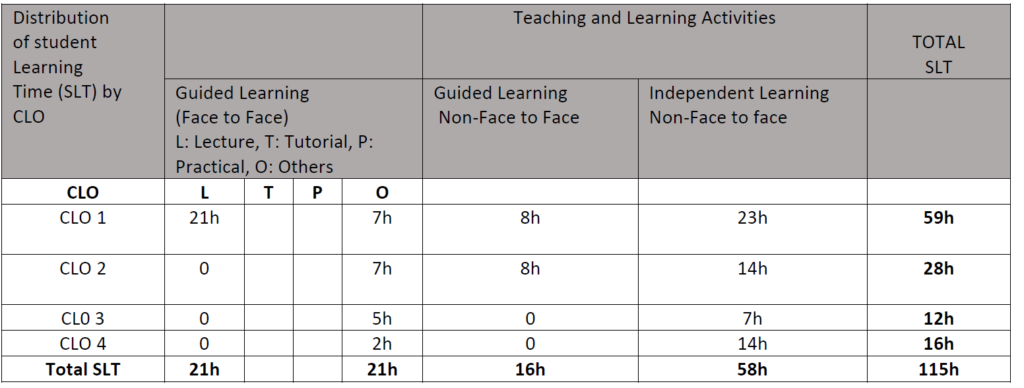MKEP1643 Mar-Jun 2022 ——> Join WA Group
COURSE INFORMATION
| School/Faculty: | Electrical Engineering/Engineering |
| Program name: | Masters of Engineering (Electrical Power) |
| Course code: | MKEP 1643 |
| Course name: | Lightning Protection and Grounding System |
| Credit hours: | 3 |
| Pre/co requisite: | Nil |
| Course synopsis: | This course introduces students to the fundamentals of lightning protection and grounding system. Emphasis will be on the lightning protection system (LPS) design as per standards requirements based on lightning and grounding fundamentals. The course also exposes students to step by step design of an LSP for a given structure. In addition, the course covers the field work on soil resistivity and ground electrode resistance measurements. At the end of the course student should be able to critically design an LPS and a substation grounding system including using application software and tools. |
| Course coordinator/ Lecturer | Prof. Dr. Zulkurnain Abdul Malek P06-101 (UTM JB) zulkurnain@utm.my people.utm.my/zulkurnain |
Mapping of the Course Learning Outcomes (CLO) to the Programme Learning Outcomes (PLO), Teaching & Learning (T&L) methods and Assessment methods:
| No. | Course_Learning_Outcomes (CLO) | PLO (Code) | Taxon./ Generic Skills | T&L methods | Assessment methods |
| CLO1 | Interpret lightning and grounding fundamentals, and lighting protection system and grounding grid designs | PLO1 (KW) | C5 | Lecture, active learning | T, F |
| CLO2 | Design complete lightning protection system and substation grounding | PLO2 (CG) | C6 | Lecture, active learning | T, F |
| CLO3 | Plan selected analytical methods and simulations to solve lightning protection system design studies | PLO3 (PS) | C6 | Project-based learning | PRR, Pr |
| CLO4 | Plan and perform assigned project responsibly, professionally and ethically | PLO4 (ETS) | EM3 | Project-based learning | PRR, Pr |
Details on Innovative T&L practices:
| Active learning | Conducted through in-class activities |
| Project-based learning | Conducted through design assignments. Students in a group of 2 are given 1 design project that require solutions involving the design calculations and verification using CDEGS/DEHN Risk Tool. Compliance to the design specifications need to be given in the form of written reports. |
Weekly Schedule:
Transferable skills (generic skills learned in course of study which can be useful and utilised in other settings):
- Team working
- Ethics and Professionalism
Student learning time (SLT) details:


Assessment Samples
- Sample Test 1
- Sample Test 2
- Sample Final Exam Paper
Special requirement to deliver the course (e.g: software, nursery, computer lab, simulation room):
- Access to computers with DEHN Tool/CDEGS
Learning resources:
Main references
- IEC 62305 Part 1-4, Protection Against Lightning
- IEEE Guide for Safety in AC Substation Grounding, ANSI/IEEE Std 80-1986
Additional references
- Electrical Insulation in Power Systems. N.H. Malik, A.A. Al-Arainy, M.I. Qureshi (1997). CRC Press.
- High Voltage Engineering, M.S. Naidu and V. Kamaraju (2004), McGraw-Hill
- The Lightning Flash, edited by Venon Cooray (2003), London (IEE Power & Energy Series 34)
- High Voltage Engineering: Theory and Practice, M. Khalifa (1990), Marcel Dekker.
Online
Academic honesty and plagiarism:
Assignments are individual tasks and NOT group activities (UNLESS EXPLICITLY INDICATED AS GROUP ACTIVITIES)
Copying of work (texts, simulation results etc.) from other students/groups or from other sources is not allowed. Brief quotations are allowed and then only if indicated as such. Existing texts should be reformulated with your own words used to explain what you have read. It is not acceptable to retype existing texts and just acknowledge the source as a reference. Be warned: students who submit copied work will obtain a mark of zero for the assignment and disciplinary steps may be taken by the Faculty. It is also unacceptable to do somebody else’s work, to lend your work to them or to make your work available to them to copy.
Disclaimer:
All teaching and learning materials associated with this course are for personal use only. The materials are intended for educational purposes only. Reproduction of the materials in any form for any purposes other than what it is intended for is prohibited.
While every effort has been made to ensure the accuracy of the information supplied herein, Universiti Teknologi Malaysia cannot be held responsible for any errors or omissions.
